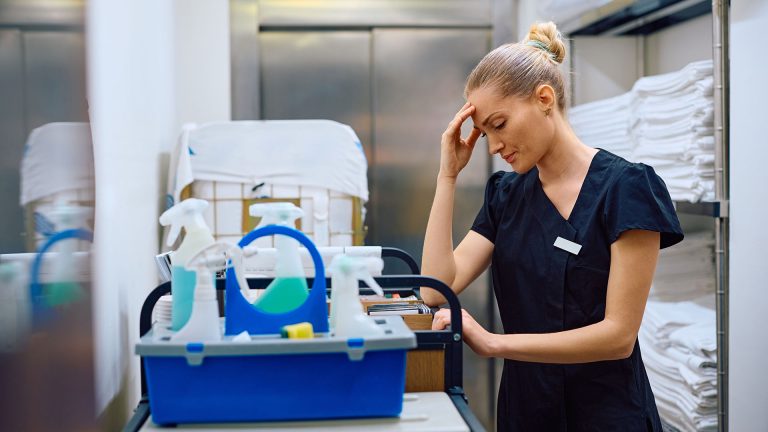Remember the Pushmi-pullyu (push-me-pull-you) from Hugh Lofting’s Dr. Dolittle stories for children? It was an antelope with two heads, one on each end of its body. (In the popular Eddie Murphy movies, they used a llama.) Whenever the creature wanted to move, both heads would take off at once, pushing and pulling back and forth and going nowhere. Since pushing and pulling exert two of the greatest stresses on the body, the poor critter must have been in constant need of the good doctor’s chiropractic skills! That same Pushmi-pullyu mentality toward workplace task and equipment design can put your employees at serious risk of sustaining disabling musculoskeletal injuries.
Pushing, pulling, lifting and carrying tasks place a greater strain on the human body’s soft tissues — muscles and tendons — than any other tasks. These tasks are also universal to nearly all work environments. Wheeled carts, platforms or equipment must be loaded and unloaded and pushed and pulled through manufacturing plants, distribution centers, hospital corridors, grocery store aisles, hotel hallways, office buildings and retail establishments. Most jobs require at least occasional pushing, pulling, lifting or carrying; and many jobs require workers to spend their entire workday engaged in these activities, performing the same, repetitive movements hour after hour. The cumulative wear and tear on the body can lead to serious injury of soft tissues and eventual disability.
Too often tasks, work spaces and equipment aren’t designed to accommodate the natural differences in the size and physical capabilities of workers. A task performed first shift by a six-foot, 180-pound, 25-year-old male may be performed second shift by a five-foot three-inch, 130-pound, 45-year-old female and third shift by a five-foot seven-inch, 260-pound, 60-year-old male. Because work tasks and equipment are usually designed around a “standard” worker type — which, unfortunately, few workers match — most workers are forced to assume awkward postures while exerting force to complete work tasks. Serious, debilitating strains and sprains can result, particularly when these actions are repeated over time.
When soft tissues in the arms, shoulders, back and legs are injured, the tissues recover, though it may take some time. But repeated injury, particularly when it occurs before tissues have had time to fully recover, interferes with the body’s natural healing process, overwhelming the body’s ability to recover and leading to permanent, disabling injury. Such cumulative traumas are called musculoskeletal disorders. Also referred to as repetitive stress injuries and repetitive motion injuries, these serious, disabling strains and sprains cost U.S. businesses tens of billions of dollars each year.
Next time: Ergonomics; just what the doctor ordered.


